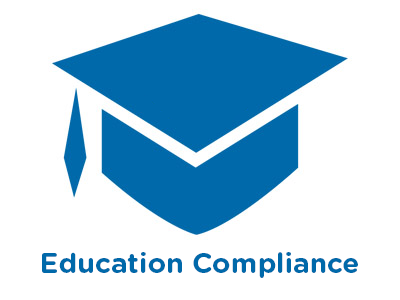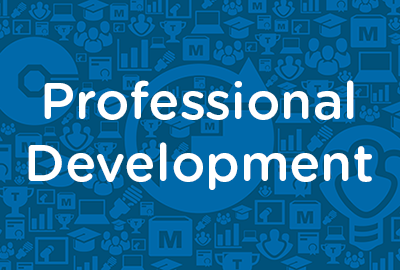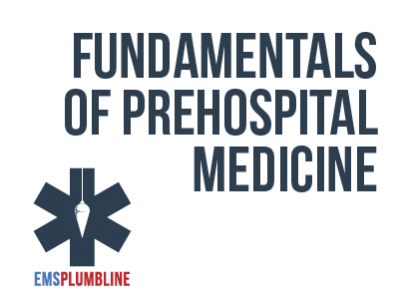 |
Presentation Methods and Debriefing Activities |
2.00 |
There is no "one size fits all" approach to working with children and youth, and this is especially true when it comes to how we present and debrief activities. During this course, participants will understand the importance of the delivery and debriefing of an activity to help children and youth make meaning, as well as some specific methods that can be incorporated into the program right away. |
 |
English Learner Socio-Emotional Factors and Typologies Review |
0.50 |
This course serves as a compliment to Knowing English Learners, an in-person training offered through CalSAC's English Learner Training and Professional Development Project. This review course is for CalSAC EL Trainers and participants. CalSAC Trainers can use this module as a way to brush up on the Socio-Emotional Factors and English Learner Typologies before conducting a training, and participants can use the module to further their understanding of the Factors and Typologies. |
 |
Suicide Prevention |
1.25 |
This course covers suicide prevention measures and suicide prevention organizations as well as the disparities found in suicide data.
After completing this course, you will be able to:
Distinguish the disparities in suicide statistics
Identify the risk factors that can lead to suicide
Apply techniques to help prevent suicide
Describe the work that suicide prevention programs are doing |
 |
Sales Skills: Advanced: Effectively Closing a Sale |
0.75 |
This course will focus on demonstrating the benefits of your product or service to others, confirming the client’s commitment by recognizing and responding to signals, and closing the sale and following up with the client. |
 |
Change Management: Managing Change |
0.50 |
This course will cover how to encourage creativity in employees and develop a commitment to change in employees. You will also learn how to communicate change effectively, improve listening skills, and control grapevine. |
 |
A Student Guide to Fire Safety |
0.50 |
Between January 2000 and May 2015, 85 fatal fires in dorms, fraternities, sororities, and off-campus housing took the lives of 118 people. This course offers students a refresher about fire safety, including the main causes of campus fires, the actions students can take to prevent fires, and the importance of working smoke alarms and knowing two ways out.
|
 |
Sales Skills: Advanced: Developing a Winning Strategy |
0.50 |
This course will focus on examining consulting strategies and developing solutions for clients. |
 |
Coaching: Communication |
1.00 |
Language is an important coaching tool. The use of suitable words during coaching will help you create relationships, repair employee confidence, and establish plans for employee success. As a coach, you must select words that directly influence your employees’ attitude, behavior, and performance. The use of appropriate language during your coaching sessions will help you convey your messages in a clear and encouraging manner.
In this course you will learn to: clearly express your message by using appropriate language, identify and use nonverbal methods of communication, and receive the desired information by asking effective questions. |
 |
E-Mail Etiquette: E-Mail Effectiveness |
0.50 |
In this unit, you will learn the importance of considering the recipient before writing an e-mail; the factors to be considered before writing a message, such as your relationship with the recipient, the subject, and the purpose of writing the message; and how to effectively compose messages, anticipating negative recipient reactions such as skepticism and apathy. Finally, you will learn about managing your e-mail, checking your e-mail, handling large volumes of e-mail, helping others manage their e-mail volume, and setting the e-mail program to respond automatically. |
 |
Interviewing Skills: Evaluating and Deciding |
0.67 |
When determining which candidate will be most successful in the job and your organization, you must complete two important steps. First, you should assess each candidate’s experience and past performance, and compare them to the job’s success factors. Then, you should compare candidates with one another to identify the one with the best fit for the job and culture.
In this course you will learn to: identify the types of bias and the steps to evaluate a candidate, and identify several criteria for ranking candidates. |
 |
Expedition Ocean: Module 1 Teacher Version |
1.00 |
|
 |
Expedition Ocean: Module 1 Student Version |
1.00 |
|
 |
Employee Performance: Communication (Instructor Guide) |
1.00 |
Communication is effective when a listener clearly understands a speaker’s message. Good communication fosters a productive exchange of ideas while minimizing the possibility of confusion or misunderstanding.
When trying to communicate with a difficult employee, you must be willing to work with that person to correct the problematic behavior. Openly discussing the behavior can help you find a mutually acceptable solution.
In this course you will learn to: communicate clearly and effectively by using verbal and nonverbal communication, and improve your listening skills, and communicate with difficult supervisors and coworkers, take a proactive approach when dealing with difficult employees, and identify types of employee dismissals.
This Instructor's Edition of this course includes notes and suggestions to assist you in presenting the material, whether in an in-person classroom setting, or as an instructor-led online or distance-learning course. It also provides you with the answers to questions found in mid-lesson activities, as well as in the quiz that concludes the course. |
 |
Call Center Management: Managing for Excellent Service |
1.00 |
This course will cover how to set service levels, achieve service levels, and use reports. |
 |
Budgeting: Operating Budgets |
1.00 |
An operating budget is a projection of the entire income statement of a company, or department. Operating budgets manage the operations of a company or department. They include the expenses associated with manufacturing, selling, and distributing products. Operating budgets also help to administer the daily functioning of the company. They project the expenses a company will incur in its manufacturing facilities, as well as the revenue that it will generate. |
 |
Adult and Child CPR (Corrections) |
2.00 |
In this course, you will learn how to properly perform Adult and Child CPR that may someday enable you to save someone's life. |
 |
Advanced Interpersonal Communication: Organizational Culture |
1.34 |
An organizational culture is the personality of an organization. This personality is both determined and accepted by the organization’s members. For example, an organization might have a culture that is youthful, energetic, and fast-paced. In this type of culture, decisions are made quickly, and employees are empowered to take action in a wide variety of situations. Another organization might be more straight-laced and policy-oriented. This organization would be much more formal and serious in the way it does business. It is important to recognize and understand the culture of an organization, so that you can determine your fit with the organization.
In this course you will learn: to determine the nature of an organization’s culture, to use the cultural network to your advantage, and identify the characteristics of the roles exhibited in the network, to identify the elements of physical culture that affect interpersonal communication, and to identify the ways in which managers can build a positive culture. |
 |
GED: Social Studies - Unit 3: Economics |
1.00 |
Welcome to Unit 3: Economics. Economics accounts for about 15% of the questions you'll see on the test. In this unit, we'll cover the basics of both micro and macroeconomics. We'll work with graphs, and we'll explore consumer economics. |
 |
GED: Social Studies - Unit 4: Geography and the World |
1.00 |
Welcome to Unit 4 - Geography and the World! World Geography accounts for about 15% of the questions you'll see on the test. There are five basic themes in geography - location, place, human-environment interaction, movement, and region. This Unit, we'll cover the basics of each one. We'll also learn about some of the maps geographers use to study the world. |
 |
Indoor Air Quality |
1.00 |
This course covers indoor air quality (IAQ) and useful associated skills. You will learn the difference between sick building syndrome and building-related illness, as well as the conditions that cause these illnesses. You will also learn model IAQ policies and practices. |
 |
Introduction to Assessment for Teachers |
1.25 |
This course covers basic assessment information for teachers. It will be a refresher for basic concepts generally covered in a teacher preparation program. Educators must understand the reasons for assessment and its importance in supporting appropriately designed instruction for students. This course will help you develop new knowledge and review prior knowledge regarding the impact of assessment on teaching and learning. |
 |
Excellence in Service - Advanced: Service Teams |
1.50 |
This course will cover how to implement proper training and empower employees and motivate employees and reinforce desirable behavior in them. You will also learn how to build customer service teams and select the right employees and conduct an interview. |
 |
Building Upward: Resuscitation of Anaphylactic Shock Part 1—Overview |
1.00 |
Retired ALS provider, Michelle Cerone, speaks with Dr. Jeremy Cushman about the recognition and treatment of anaphylactic shock. This discussion gives the BLS provider the opportunity to compare allergic reactions to the life-threatening condition that requires rapid intervention. Final Exam: Please read each question carefully. You will have two attempts to gain a 70% or higher on this exam. If you are not successful in two attempts, you are welcome to take the course again to gain the certification. |
 |
Call Center Management: Communicating Information to Executives |
0.75 |
This course will cover how to identify the information that executives need and communicate with executives. |
 |
GED: Reasoning Through Language Arts - Unit 7: The Extended Response |
1.00 |
Welcome to Unit 7: The Extended Response. The last part of the RLA section is the Extended Response, or essay. Here's how it works. You'll be given something to read - a source text or texts - and asked to write an essay in response to a prompt related to the reading. In this unit, we'll learn about two types of essays and take a look at an example of each one. |


























